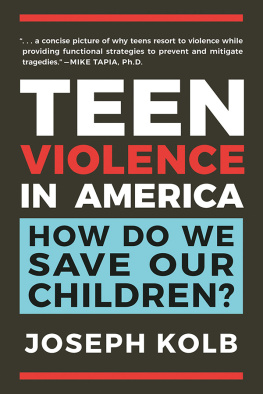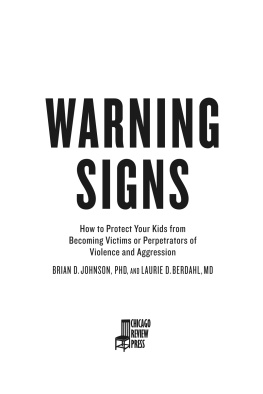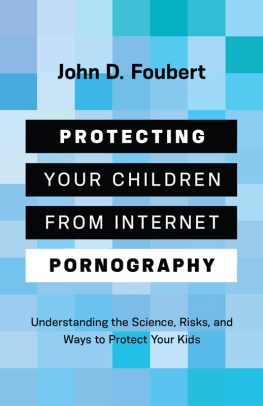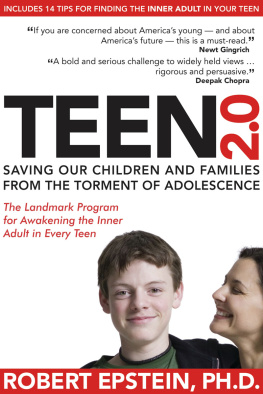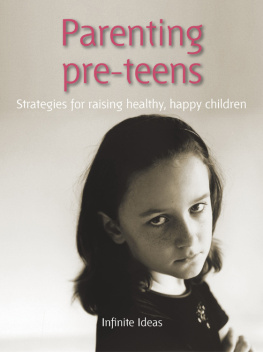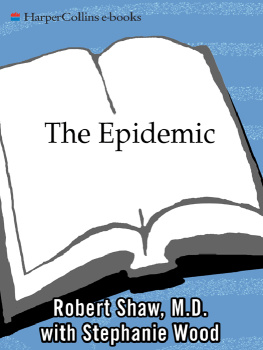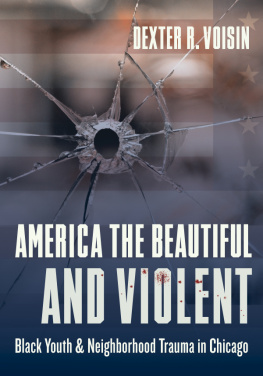Hatherleigh Press is committed to preserving and protecting the natural resources of the earth. Environmentally responsible and sustainable practices are embraced within the companys mission statement.
Visit us at www.hatherleighpress.com and register online for free offers, discounts, special events, and more.
Library of Congress Cataloging-in-Publication Data is available upon request.
ISBN: 978-1-57826-812-2
All rights reserved. No part of this book may be reproduced, stored in a retrieval system, or transmitted, in any form or by any means, electronic or otherwise, without written permission from the publisher.
INTRODUCTION
A S A VETERAN crime reporter, I was accustomed to violent crime scenesnot only in the U.S. but from my time spent on assignment in Ciudad Juarez, Mexico and San Salvador, El Salvador, two of the most violent non-combat cities in the world. It was my job to paint a written picture of the incident, including its causes, potential impact, and outcome. In this position, I spoke to many family members who were forced to identify loved onesvictims of oftentimes grisly deaths.
In all my experience, it was always the cases involving young perpetrators that left me truly bewildered. As my journalistic career eventually gave way to a career in criminology and corrections, I sought to understand and ultimately counteract the reasons why people, especially young people, senselessly hurt each other. I struggled to find the logic behind why a seventeen-year-old would stab his girlfriend to death just because she broke up with him; or why a sixteen-year-old would shoot up his school because some of his classmates made fun of him. These are compelling, important questions, which when left unanswered can haunt communities for years and years.
For our purposes, it would be best to distinguish between criminal juvenile behavior and juvenile delinquency. Oftentimes, the two terms are used interchangeably, resulting in the lines between them becoming blurred.
Criminal juvenile behavior refers specifically to those instances involving more serious crimes such as burglary, armed robbery, battery, and homicide. These events, once thought to be rare anomalies, are now occurring with regular frequency.
Juvenile delinquency, by comparison, is relatively benign albeit still disturbing and a potential stepping stone to criminal behavior if left unchecked. It is also by no means a new phenomenon; quite the contraryyouths have been testing the boundaries of parental and societal rules since the beginning of time. Oftentimes, these acts of rebellion dont result in any physical harmacts of vandalism such as throwing a rock through a window or spray painting a name on a wall appear harmlessbut they still involve a victim. The owner whose property has been vandalized still incurs the cost of clean-up and repairs, as well as the personal violation of space and property. When minor crimes and public mischief goes unanswered or is ignored, the potential for serious crime increases (in what is called the Broken Windows Theory, discussed in Chapter 12).
In April 2018, we had multiple incidents in a southeast Albuquerque neighborhood where groups of teens were stomping on and breaking the windshields of vehicles parked in the street. Alyssa Gonzalez, one of the victims mother, was angered that her sons windshield had been broken for no reason. He just got this car a couple months ago from his grandpa, and hes been working really hard and getting it fixed up and looking good, she told a local television station. He put his time and effort into it just for other kids to come and destroy it, so its frustrating for him.
Gonzales expressed her anger and frustration not just at the culprits but also at their parents. I think we need to support our teens more and, honestly, parent better.
In December 2017, a sixteen-year-old girl in San Juan County, NM was so intoxicated that her mother called sheriff deputies. When they arrived, she was found lying in the street. A neighbor told police the girl was previously holding a shotgun, which he had since secured. The San Juan County deputy was putting the girl in the back of his vehicle when she became increasingly belligerent, kicking out a window and stole the vehicle, ultimately crashing into three cars causing it to stop.
Perhaps the most famous juvenile delinquent is George Herman Babe Ruth who, at seven years old, was placed in St. Marys Industrial School for Boys in Baltimore, Maryland. Ruth was a handful for his parents, who had no patience for young Georges proclivity towards tormenting local police and residents alike with his words and actions, as well as his habit of overindulging (a habit which he would carry with him into adulthood). St. Marys was formally an orphanage but was also known for dealing with incorrigible children, making it more like a reform schoolwith strict discipline meted out in the form of corporal punishment. It provided the sort of structure that children like Ruth subconsciously hunger for.
The rest, in Babe Ruths case, is history. But for other St. Marys alumni such as Joseph Haines, his admission to the school came as the result of a violent crime. In 1904, a drunken eleven-year-old Haines accidentally fatally shot his friend, Thomas Gordon, age seventeen.
Fast forward a century later, Robert Emmet Mara, an advocate for the rights and safety of children in Baltimore, still sees many of the same obstacles Ruth and Haines were confronted with as very much present in turn of the century Maryland. He advocates for more structured environments for troubled youths in the vein of St. Marys, arguing that keeping families together for the sake of the family is not always in the best interest of the child.
Mara expressed his frustration by highlighting the plight of some teens on the hockey team he coached. Of the five starters on his 2006 team, all of them had adult criminal records. Three of the five boys have never had lasting interactions with their fathers, and four of them have mothers suffering long term heroin addiction, he said. Two of the young men have two addicted parents while only one of the parents I have known has had a job. And they all come from a single block of North Glover Street in east Baltimore.
And so, the question I have for the reader is this, he concludes. What was the purpose of keeping families such as these intact?
What must be done for these children? Is it ultimately better to remove a child from their home or imprison themfor his or her own good, and the good of society?
And what about the parents? At the correctional facility I work at, I am frequently dismayed to learn that an inmates father is in an adjoining unit at the same jail. What can be done to stop the cycle of criminal behavior and violence from continuing on down through each new generation?
Maras frustration is echoed by thousands of police, prosecutors, social service and child welfare workers. When a child does bad thingsand they dowhat do we as responsible adults and caretakers do with them? Do we scold them, wagging a finger and telling them not to repeat the behavior? Or is there some form of punishment that can satisfy the victim while rehabilitating the perpetrator?
This question has been hotly debated for the past generation. Over the centuries, society has made various attempts at juvenile justice and rehabilitation, but little has been done in the realm of early identification and treatment. Whats more, some rehabilitation centers become something more akin to warehouses, places where there is little rehabilitation and even further exposure to crime and victimization. The Florida School for Boys was notorious for allegations and proven instances of sexual abuse, beatings, torture, and neglect, all of which do little to reform children and only serve to help them graduate to a life of adult criminal behavior. The mere term reform school, which should give the impression that serious attempts are made at rehabilitating juvenile offenders, now only serves as a euphemism for jailing children.

